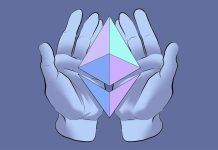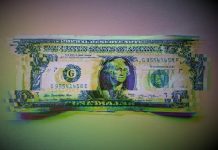There is a ton of interesting information and data available on-chain, from token transfers to seeing assets held in a wallet and more.
A lot of people mistake the anonymity crypto offers with transactions being private. But the majority of blockchains rely on public ledgers to work, and show each and every transaction and a host of data around those transactions to anyone who knows how to look.
Owing to this transparency, each transfer of cryptocurrency is available for the scrutiny of public observers. But raw blockchain data is a mess that needs sorting into a more readable and usable output. Thankfully, free websites called blockchain explorers trawl through this data and refashion it into a sprawling map of the cryptocurrency market. These vast public databases let you search for a wallet or smart contract and track any transfers it has made.
One of the most popular blockchain explorers is called Etherscan. It’s created to track the Ethereum blockchain, but similar sites exist for other chains, like BNB Chain’s BscScan, Blockchain.com for Bitcoin or Solscan for Solana. We’ll focus on Etherscan in this guide, but you can apply much of the learning to the other blockchain explorers.
How to get started with Etherscan
Etherscan is a popular blockchain explorer for Ethereum (ETH). It’s handy for tracking funds and it’s pretty powerful, too; it even lets you interact with smart contracts directly from its website. You can track the entirety of the Ethereum blockchain here, including ERC-20 tokens and ERC-721 non-fungible tokens (NFTs). Let’s start with what you can see on the front page.
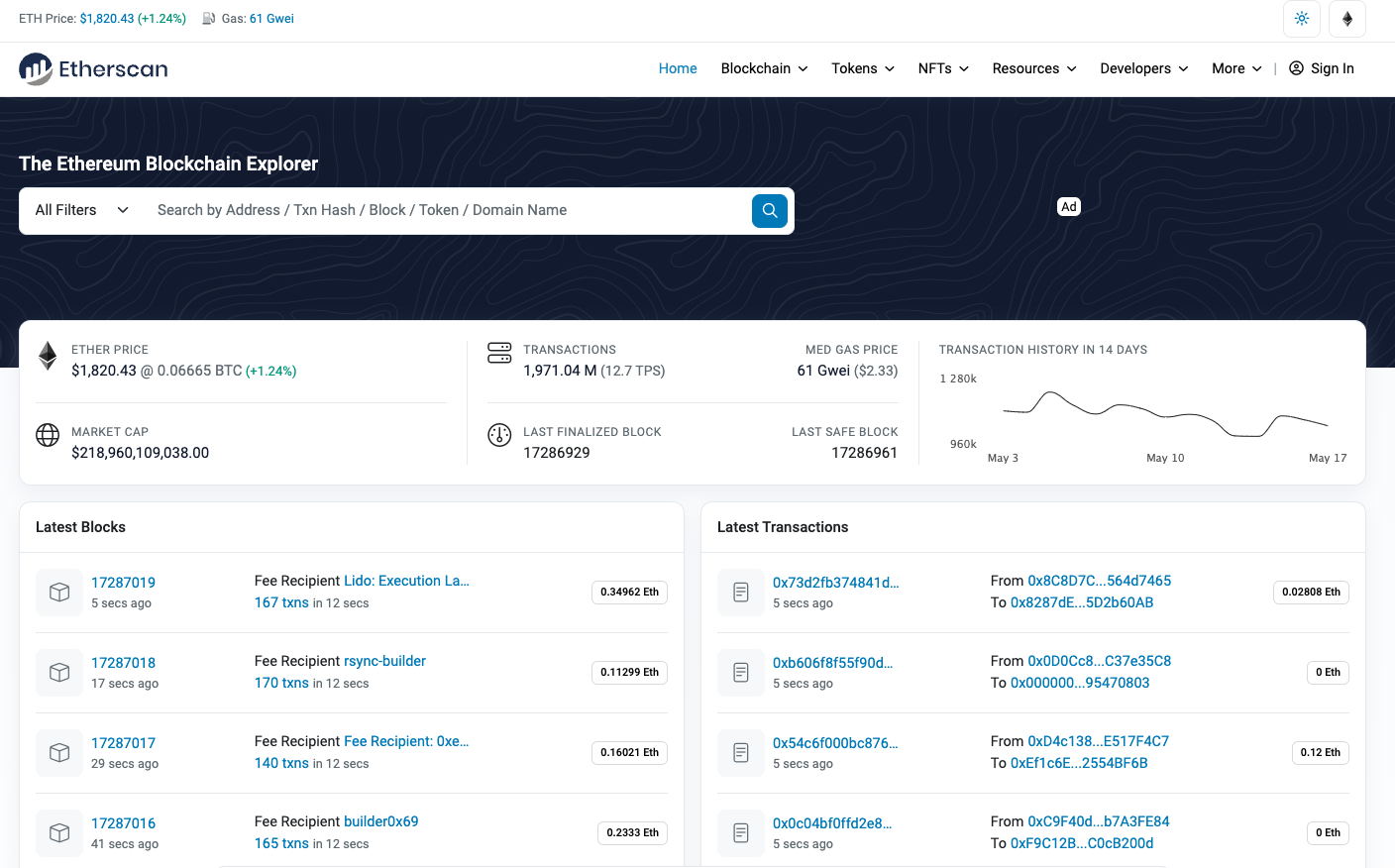
The bottom left-hand column of the screenshot above displays all the latest blocks – batches of transactions that a blockchain validator processed all in one go. You can see how much ETH they earned for validating the transaction, how long it took and the block number (also known as the block height). The column on the bottom right displays information about individual transactions included within the latest blocks. It details who sent what to whom, how much was sent and when.
Of course, these columns only display the latest data. Dig deeper into Etherscan and you can see all transactions from every wallet and smart contract. Clicking on the latest transaction hash reveals more information about that transaction.

This includes how many confirmations it received – how many times validators approved the transaction on the blockchain. You can also see the “gas price” – how much it cost, in ETH’s smallest denomination, the Gwei, to send the funds between wallets. Although all Ethereum addresses start with “0x”, some wallets are labeled, which identifies who owns the wallet. You can click on the label to see what other smart contracts or data is connected to that address. For example, these are all the accounts claimed by NFT marketplace OpenSea.
See Also: How to Check Your Ethereum Transaction
You can also interact directly with smart contracts on Etherscan and check out the code. The following screenshot is of the smart contract code for Loot, a once-popular NFT project.
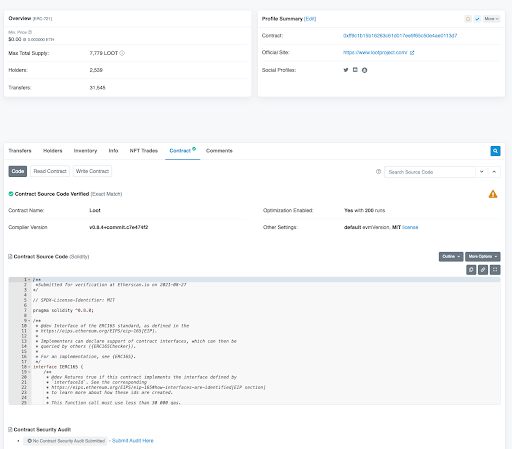
You can see the total supply of the NFT collection, how many people hold a token from the collection and the number of people that traded the NFT. You can also see the code for the smart contract, and even interact with it by clicking on “write contract.”

This page once let you claim Loot NFTs. They’re all long gone; the collection sold out within a few minutes during the summer of 2021.
Many crypto sites offer a prettier front-end website that makes it easy to interact with smart contracts, for instance, Uniswap. But while those sites make it easier, the permissionless nature of smart contracts means you can access them from anywhere, including Etherscan. So, instead of swapping tokens on Uniswap.org, you could do it on Etherscan instead.
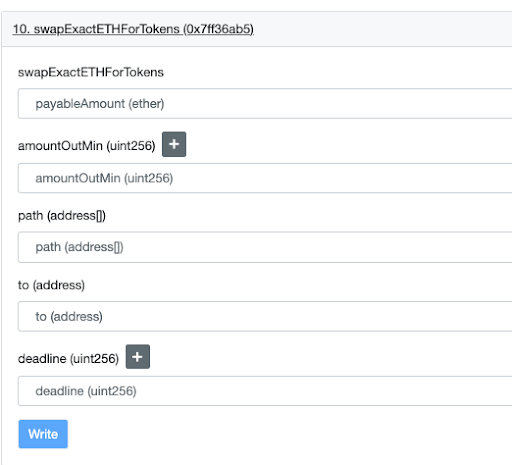
Etherscan also allows for the tagging of certain wallets – which is very useful when you need to follow the money. For example, it’s possible to track the wallet that drained balances from FTX accounts shortly after the exchange went bankrupt. You usually can’t see transfers from exchanges, which largely do not process trades on blockchains but instead on internal matching engines. It’s cheaper for exchanges to avoid the blockchain because they do not have to pay gas fees. That said, you can see some interesting information about exchanges, such as how much ETH crypto exchange Kraken holds in one of its wallets.
Other blockchain explorers and tools
Although this guide has focused on Etherscan, other sites function much the same. Indeed, Etherscan has several system sites through its Explorer-as-a-Service (EaaS) product, which leverages Etherscan to replicate the site on other blockchains compatible with the Ethereum Virtual Machine. Its sister site, BscScan, for instance, looks pretty much identical:

Other explorers offer more bespoke analytics. Nansen is an advanced (and paid) explorer site that lets you track advanced statistics about the crypto market. Others, like Chainalayis, offer powerful tools to track the flow of money across several wallets. Again, unlike blockchain explorers like Etherscan, its tools are not free; indeed, law enforcement in the U.S. fork over millions of dollars to access its services, which help government agencies track down criminals.









